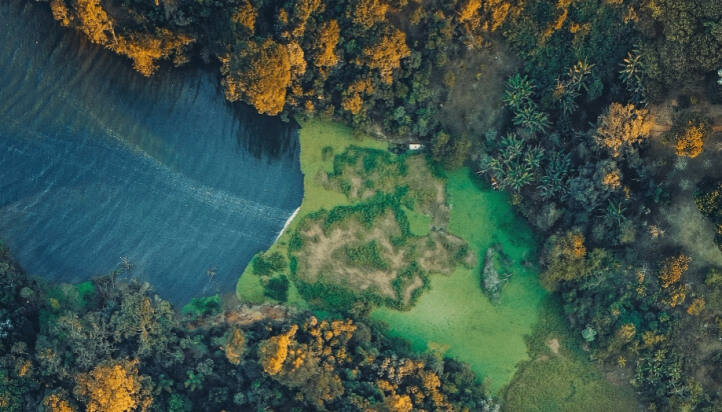Much of the attention for investors over the last decade on the sustainability and ESG profiles of portfolio companies has been on their greenhouse emissions and evidence of strategies on reduction and decarbonisation. But recent years have seen the issue of biodiversity preservation and the restoration of ecosystems shoot up the agenda, as the reality of how vital this is to our economies and a sustainable future takes hold to investors. Position Green's resident experts Thomas Engmose & Julie Aamodt provide an insight into why ESG due diligence has rightly widened its focus to include nature in its assessment of a firm’s sustainability profile.

Why has biodiversity become such a burning issue on the ESG investing agenda?
The protection and restoration of the natural world has become an increasingly high-profile topic in recent years, as the stark realities of biodiversity loss and ecosystem destruction become clearer to the business community. At the last UN Biodiversity Conference (COP15) held in Montreal in December 2022, global targets were set and are soon to be integrated with existing disclosure frameworks, as regulators, governments and central banks rapidly move to bring in new requirements and obligations for companies to address nature-related risk in their supply chains.
Biodiversity loss poses major and real risk to companies, and their investors, that rely on natural resources, from agriculture, to energy, to manufacturing. This also includes companies that operate in areas with high biodiversity, which can face both physical and transition risks, including corporate profile and reputation, market, and regulatory risk. Developments in this area, such as the Taskforce on Nature-related Financial Disclosures (TFND) and the EU are driving new guidelines and regulations with disclosure requirement related to biodiversity and nature-related risk, such as the EU taxonomy, the Corporate Sustainability Reporting Directive (CSRD) and Sustainable Finance Disclosure Regulation (SFRD).
Next year, the EU’s Corporate Sustainability Due Diligence Directive will introduce due diligence obligations for certain companies across their supply chains, requiring them to report on and address adverse impacts, including in relation to biodiversity.
In what way can investors help to mitigate biodiversity loss and protect the natural capital?
The investment community will play a critical role in this context as there is an increasing focus on shifting capital flows towards nature-positive economic activities. Investors will increasingly need to be aware of how their portfolio impacts biodiversity, where their dependencies are, and where there are potential material financial risks. They need to be able to incorporate biodiversity considerations into their business strategy, governance, risk management, and, of course reporting. Mitigating the impacts of biodiversity loss is essential for the long-term sustainability and resilience of businesses and their investors.
Why would nature and biodiversity considerations have anything to do with the performance or value of portfolio companies?
It has become increasingly clear in the last decade how truly impactful this is, across the value chain, and investors are now recognising the very real importance of biodiversity protection, ecosystem regeneration, and sustainable business practises on the financial performance of companies. Companies that effectively manage their impacts on biodiversity and promote biodiversity conservation can benefit from reduced risks and enhanced reputation and brand value. These companies may be seen as leaders in sustainable business practices and may be more attractive to investors who are looking for long-term sustainability and resilience. Despite this, many companies, and investors, at least at this stage, do not adequately account for nature-related risks and opportunities in their decision making.
In terms of direct, material impact, businesses of which their core function relies on, for instance, the extraction of resources from oceans, forests, or arable agriculture, such as large-scale commercial farming, the pharmaceutical industry, construction, real estate, manufacturing, are all impacted. In addition, those that are indirectly dependent on the provision of ecosystem services, such as healthy, fertile soils, a stable local climate, pollination, and constant access to freshwater, will likely face supply chain disruptions and increased costs if these resources become degraded or scarce. And they already have. Many plant, fruit and nut products rely on the pollination abilities of a healthy bee population. Decades of disruptive pesticides which damage these bee populations have shown how one business practice, such as large-scale arable farming, can indirectly, negatively impact another.
Regulatory, reputational and market risks are also a factor. For example, the EU has proposed new legislation related to deforestation-free supply chains, meaning that companies will have to conduct very strict due diligence if they place commodities linked to deforestation on the EU market. The businesses practises of soy, palm oil, rubber, beef, pulp and paper have become ubiquitous in the public consciousness, and when entering the EU market, will be subject to penalties if found not complying with the legislation.
It is therefore no surprise that investors increasingly look for investment opportunities in companies that demonstrate a commitment to biodiversity conservation and sustainable business practice, and conduct ESG due diligence before making an investment to evaluate performance in these areas. As investors become more aware of the risks associated with biodiversity loss, they may increasingly choose to avoid investing in companies that do not manage their impacts on biodiversity or contribute to biodiversity loss.
Can ESG due diligence beneficially impact biodiversity?
Applying a thorough due diligence analysis and evaluation will allow investors to make more informed decisions about their investments by identifying potential risks and opportunities, while also helping those companies take action to avoid repelling potential? investors and securing commercial interests and their own sustainable future.
Such assessment reviews the impact of a target company on biodiversity, for example on potential habitat destruction, dependency on natural resources, and the pollution of air, water and soil, as well as the company’s efforts to manage and mitigate these impacts. It also enables investors to identify opportunities for protecting biodiversity and natural capital, while evaluating its engagement with stakeholders, such as local communities and conservation organisations, and assessing its contributions to biodiversity conservation and sustainable land use practices.
Biodiversity is closely linked to climate change and other environmental issues. For example, healthy ecosystems can help mitigate climate change by absorbing and storing carbon, and biodiversity loss can disrupt these ecosystem services. In addition, the impacts of climate change, such as extreme weather events and sea-level rise, can exacerbate biodiversity loss by directly or indirectly destroying habitats and disrupting ecosystems. An ESG due diligence can enable companies and investors to understand these risks, and to include biodiversity risks and opportunities as essential components in their risk assessments.
By investing in companies that have strong biodiversity management policies and practices and that promote biodiversity conservation and sustainable land use practices, investors can help protect natural capital and support long-term sustainable development, as well as mitigate financial risk.
N.B. The information contained in this entry is provided by the above supplier, and does not necessarily reflect the views and opinions of the publisher


